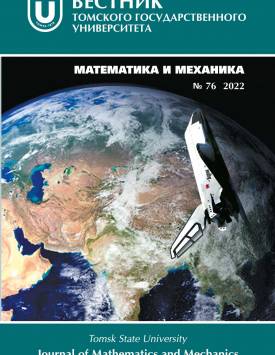Methods for determining the drag coefficient at gas injection from the surface of spherical particle
New methods for studying the effect of gas injection from the surface of a solid spherical particle on its drag coefficient in the transient and self-similar regimes of flow around the particle have been presented. An advantage of the proposed methods is the ability to isolate in a pure form the effect of the mass flux from the particle surface (without the effect of other factors, for example, particle acceleration) on the drag coefficient. New results of an experimental study of the effect of air flow blowing on the drag coefficient of a solid perforated sphere in the Reynolds number range Re = 133÷9900 have been presented. It has been shown that the drag coefficient decreases when air is blown from the particle surface. As the Reynolds number Re increases, the drag coefficient CD upon gas injection in the transient flow regime decreases to a certain critical value corresponding to the onset of the self-similar regime. At the onset of the selfsimilar regime (reaching the critical value of CD), the drag coefficient increases with an increase in the Reynolds number and asymptotically tends to a constant value CD = 0.44. However, the opposite effect has been found for a small diameter of the particle (D = 1 cm) at a blowing velocity ue ≥ 1.3 m/s: an increase in the drag coefficient of the particle CD at air efflux from the particle surface in comparison with the drag coefficient value in the absence of gas flow injection (ue = 0 m/s). This is apparently associated with a change in the characteristics of the boundary layer of the particle due to the rearrangement of the flow profile near the spherical particle surface caused by a decrease in its size. An empirical dependence of the drag coefficient of a solid sphere on the ratio of the velocity of injection from the surface of the particle to the velocity of blowing CD = 0.15 + (0.44 - 0.15)/ (1 + 9ū/53.8) (with the coefficient of determination R2 = 0.89) has been obtained for a self-similar particle regime flow. Contribution of the authors: the authors contributed equally to this article. The authors declare no conflicts of interests.
Keywords
solid sphere, gas injection, drag coefficient, Reynolds number, transient flow regime, self-similar flow regime, experimental studyAuthors
| Name | Organization | |
| Arkhipov Vladimir A. | Tomsk State University | leva@niipmm.tsu.ru |
| Basalaev Sergey A. | Tomsk State University | tarm@niipmm.tsu.ru |
| Perfllieva Ksenia G. | Tomsk State University | k.g.perfiljeva@yandex.ru |
| Polenchuk Sergey N. | Tomsk State University | |
| Usanina Anna S. | Tomsk State University | usaninaanna@mail.ru |
References

Methods for determining the drag coefficient at gas injection from the surface of spherical particle | Vestnik Tomskogo gosudarstvennogo universiteta. Matematika i mekhanika – Tomsk State University Journal of Mathematics and Mechanics. 2022. № 76. DOI: 10.17223/19988621/76/5
